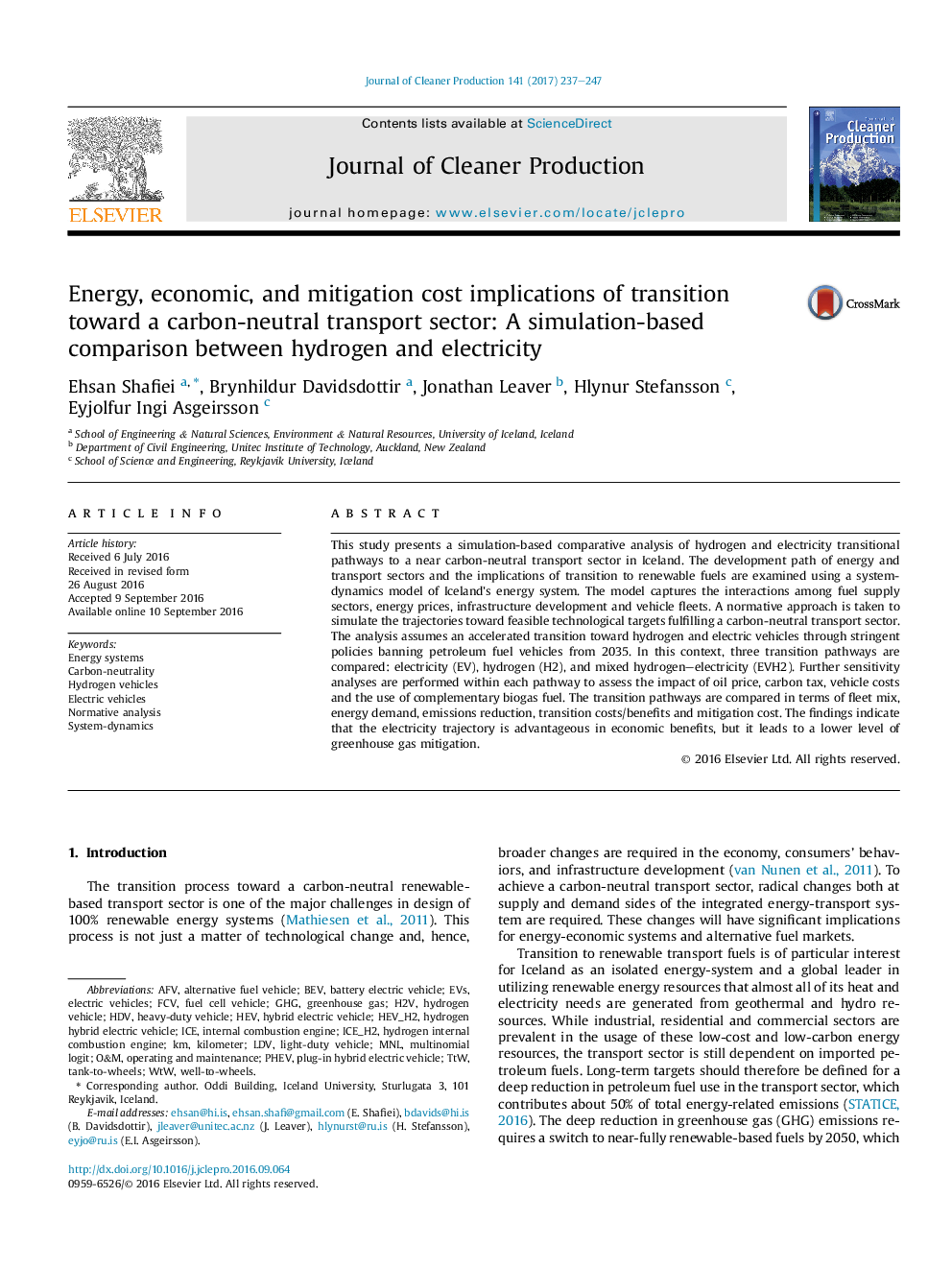| Article ID | Journal | Published Year | Pages | File Type |
|---|---|---|---|---|
| 5481682 | Journal of Cleaner Production | 2017 | 11 Pages |
Abstract
This study presents a simulation-based comparative analysis of hydrogen and electricity transitional pathways to a near carbon-neutral transport sector in Iceland. The development path of energy and transport sectors and the implications of transition to renewable fuels are examined using a system-dynamics model of Iceland's energy system. The model captures the interactions among fuel supply sectors, energy prices, infrastructure development and vehicle fleets. A normative approach is taken to simulate the trajectories toward feasible technological targets fulfilling a carbon-neutral transport sector. The analysis assumes an accelerated transition toward hydrogen and electric vehicles through stringent policies banning petroleum fuel vehicles from 2035. In this context, three transition pathways are compared: electricity (EV), hydrogen (H2), and mixed hydrogen-electricity (EVH2). Further sensitivity analyses are performed within each pathway to assess the impact of oil price, carbon tax, vehicle costs and the use of complementary biogas fuel. The transition pathways are compared in terms of fleet mix, energy demand, emissions reduction, transition costs/benefits and mitigation cost. The findings indicate that the electricity trajectory is advantageous in economic benefits, but it leads to a lower level of greenhouse gas mitigation.
Related Topics
Physical Sciences and Engineering
Energy
Renewable Energy, Sustainability and the Environment
Authors
Ehsan Shafiei, Brynhildur Davidsdottir, Jonathan Leaver, Hlynur Stefansson, Eyjolfur Ingi Asgeirsson,
